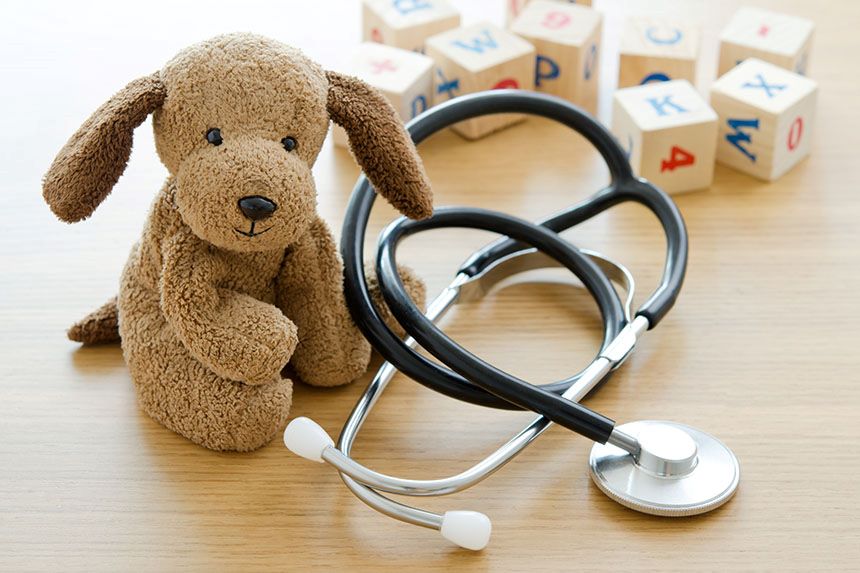Both the Children’s Health Insurance Program (CHIP) and Medicaid play critical roles in ensuring that children across the U.S. are receiving healthcare coverage regardless of their family’s financial status.
But, in some states there is no difference between the two programs in terms of benefits or eligibility requirements due to flexibilities afforded to a state in designing its policy — so, what distinguishes CHIP from Medicaid?
How is CHIP funded?
CHIP is funded jointly at the federal and state levels of legislature through a formula based on the Medicaid Federal Medical Assistance Percentage (FMAP). As additional incentive for states to expand their coverage programs for children, Congress enhanced the federal matching rate for CHIP, which is generally about 23 percent higher than the Medicaid rate — averaging 93 percent nationally.
Because CHIP is a capped program, each state is provided an annual CHIP allotment. Every fiscal year, the Centers for Medicare and Medicaid Services (CMS) determines their share of program funding for that year. States must provide matching funds to get their federal funding allotment.
CHIP eligibility for children
Chip eligibility is, ultimately, decided on a state-to-state basis, but the majority of states set the threshold at 200 percent of the federal poverty level or more for children. CHIP can also support pregnant women under more variable circumstances.
Although CHIP covers more children than Medicaid, its coverage options are more limited as well.
Medicaid eligibility for children
Children from families earning 133 percent or less of the federal poverty level per year are eligible for Medicaid. Up until 2010, with the passing of the Affordable Care Act (ACA), child eligibility was also based on age; the older a child was, the less likely they were to qualify. The ACA made it so that income eligibility was standard for children between 6 and 19 years old.
Benefits: CHIP vs. Medicaid
There are larger differences between CHIP and Medicaid in terms of required benefits.
While they may vary state to state, Medicaid services must provide certain minimum mandatory services:
- Children’s immunizations
- Prenatal care
- Early and Periodic Screening, Diagnostic and Treatment (EPSDT) services for children
- Physician services
- Hospital care (inpatient and outpatient)
Whereas CHIP — while still varying state to state — must provide a package of services equivalent to at least those given to the policy-designing state’s employees and need not match all the services covered by that state’s Medicaid program.
The minimum requirements of CHIP coverage include:
- Routine check-ups
- Immunizations
- Doctor visits
- Prescriptions
- Dental and vision care
- Inpatient and outpatient hospital care
- Laboratory and X-ray services
- Emergency services
CHIP vs. Medicaid enrollment rates
All states are required to provide data to CMS on a range of indicators related to key application, eligibility, and enrollment processes with the Medicaid and CHIP processes. Below is a list of the 20 states with the highest amount of CHIP enrollments:
Top 10 states with highest CHIP enrollment
| Rank | State name | State expanded Medicaid | Total Medicaid enrollment | Total CHIP enrollment |
| 1 | California | Y | 10530288 | 1293571 |
| 2 | Texas | N | 3631572 | 646131 |
| 3 | New York | Y | 5883397 | 643744 |
| 4 | North Carolina | N | 1495121 | 258899 |
| 5 | Illinois | Y | 2564139 | 253417 |
| 6 | Florida | N | 3450613 | 229377 |
| 7 | New Jersey | Y | 1492517 | 210515 |
| 8 | Georgia | N | 1588271 | 209924 |
| 9 | Ohio | Y | 2444657 | 206210 |
| 10 | Pennsylvania | Y | 2757505 | 180902 |
Fig 1: Data pulled from data.medicaid.gov as provided by The Centers for Medicare & Medicaid Services (CMS). Updated Jan. 1, 2019.
The data shows that the states with the most CHIP enrollments have approximately 10 times as many Medicaid enrollments. There is also, to a lesser extent, a noticeable correlation between a higher state cost of living and CHIP enrollments. California and New York have two of the highest costs of living in the U.S. - and they both rank at the top of the list.
CHIP use across the U.S.
Definitive Healthcare’s Professional Services team cross-referenced official CHIP data provided via the Medicare website data from within our own platform, and the results convey some interesting insights into how CHIP is being utilized. This first chart highlights the top diagnoses for each of CHIP’s two covered patient types: children and pregnant women.
Top 5 diagnoses for children under CHIP
| Rank | Patient category | ICD-10 code | ICD-10 code description | Patient volume |
| 1 | Child | J069 | Acute upper respiratory infection, unspecified | 28,759 |
| 2 | Child | J029 | Acute pharyngitis, unspecified | 25,413 |
| 3 | Child | R509 | Fever, unspecified | 17,292 |
| 4 | Child | J020 | Streptococcal pharyngitis | 13,431 |
| 5 | Child | R05 | Cough | 11,646 |
Fig 2: Insights provided by the Definitive Healthcare Professional Services team for use in this article. Based on data from Hospitals & IDNs database (2019).
Top 5 diagnoses for pregnant women under CHIP
| Rank | Patient category | ICD-10 code | ICD-10 code description | Patient volume |
| 1 | Pregnant female | I10 | Essential (primary) hypertension | 10,210 |
| 2 | Pregnant female | O80 | Encounter for full-term uncomplicated delivery | 7,172 |
| 3 | Pregnant female | O0993 | Supervision of high risk pregnancy, unspecified, third trimester | 6,124 |
| 4 | Pregnant female | O0992 | Supervision of high risk pregnancy, unspecified, second trimester | 4,680 |
| 5 | Pregnant female | E119 | Type 2 diabetes mellitus without complications | 4,184 |
Fig 3: Insights provided by the Definitive Healthcare Professional Services team for use in this article. Based on data from Hospitals & IDNs database (2019).
All U.S. states use CHIP funds to provide coverage for children, but only 18 states also use CHIP funding to cover pregnant women — this explains the clear division in patient volume between children and pregnant women reflected in the ranking above. The number one most common diagnosis billed by child CHIP enrollees (upper respiratory infection) is almost 3 times as prevalent as the number one most common diagnosis among pregnant women (hypertension).
Top 10 diagnoses for the top 5 CHIP active states
| Rank | ICD-10 code | ICD-10 code description | Claims volume | Patient volume |
| 1 | J069 | Acute upper respiratory infection, unspecified | 37,533 | 27,977 |
| 2 | J029 | Acute pharyngitis, unspecified | 35,502 | 25,129 |
| 3 | R509 | Fever, unspecified | 22,599 | 17,092 |
| 4 | R05 | Cough | 16,720 | 13,273 |
| 5 | J020 | Streptococcal pharyngitis | 17,102 | 12,869 |
| 6 | I10 | Essential (primary) hypertension | 17,586 | 10,644 |
| 7 | R109 | Unspecified abdominal pain | 12,094 | 8,843 |
| 8 | J309 | Allergic rhinitis, unspecified | 10,692 | 7,382 |
| 9 | O80 | Encounter for full-term uncomplicated delivery | 8,727 | 7,378 |
| 10 | N390 | Urinary tract infection, site not specified | 10,362 | 7,317 |
Fig 4: Insights provided by the Definitive Healthcare Professional Services team for use in this article. Based on data from Hospitals & IDNs database (2019). Top 5 states based on CHIP data availability.
By observing the top 10 diagnoses across the 5 most CHIP active states within our records, we again see that CHIP diagnoses among children are still the most common. Acute upper respiratory infection is still the number one highest volume diagnosis. Acute pharyngitis is a close second, but then we can see a 10,000+ claims decline to the third ranked diagnosis of fever.
Learn more
Looking for more information on federal healthcare effectiveness? Read our recently updated Top Hospitals by Medicaid and Medicare Payor Mix blog for hospital-specific stats and insights.
Curious about other healthcare and analytics topics? Head over to the Definitive Blog hub to search through our extensive collection of content.




